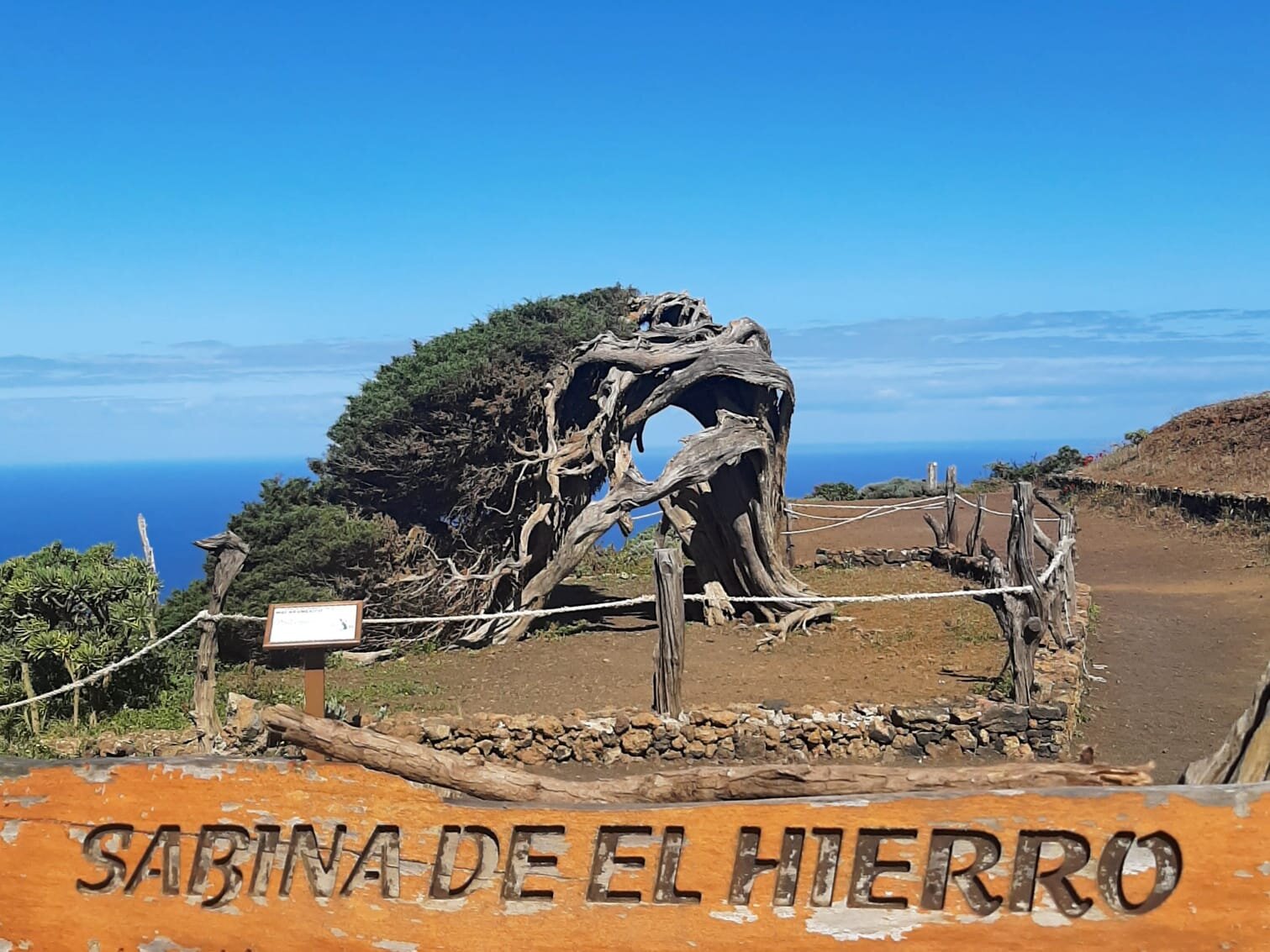El Sabinar
Sabina de El Hierro
El Sabinar is a forest of juniper trees located in the nature reserve La Dehesa in the western part of El Hierro. It is distinguished by the formation of trees with curved and drooping branches. This is caused by the strong mostly north to north-easterly winds in the area, which have shaped the trees in this way over time. Read in this blog about our visit and our hike in El Sabinar and La Dehesa and these special trees.
No visit to El Hierro is complete without a visit to La Dehesa and El Sabinar. It is an area that is uninhabited except for a few shepherd's and guards' houses. In El Sabinar you will find trees with hanging, bending and twisted branches, one of the special attractions on the island. El Sabinar is, albeit severely thinned, the last true juniper forest on the island. El Sabinar is therefore one of the most visited places on the island.
You can reach El Sabinar in different ways. It is easily accessible by car via the HI-506 road, a side road of the HI-500 on the southwestern part of the island. The HI-506 goes all the way to El Sabinar where you can park the car. The last two kilometers are unpaved but can be driven with a regular car in good weather. Because we had read in advance that hiking through the area is also very beautiful, we chose that option.
Virgen de los Reyes
A few kilometers before El Sabinar you will find this beautiful little church Santuario Virgen de los Reyes along the HI-506
We parked the car at the small church “Santuario Virgen de los Reyes”. This is at the beginning of the HI-506 road and you can park well there too. The church itself is also worth a visit, small but very authentic and beautiful. From the church it is about a 3 km hike to El Sabinar on a passable and not too steep path, the EH-9. And this is a nice hike anyway because you walk through La Dehesa on the path slowly into the area with the trees.
When you arrive at El Sabinar you will immediately see the famous tree that has been visited and photographed countless times. At the tree there are a number of good information boards with explanations about the area and the tree. You are not supposed to touch or stand next to the tree, there is a clear barrier with a rope.
The Sabina is a juniper tree (Juniperus phoenicea) that grows on the islands of El Hierro, La Gomera, La Palma, Tenerife and Gran Canaria. The Canarian variety of the juniper tree grows to an average of 2 to 3 meters in length, but can reach a height of 8 meters under favorable conditions. The special thing about the trees that grow here are their unorthodox shapes. The bending, hanging and twisted shape is due to a permanent north or north-east wind from the vulcanic mountains. Especially the old ones have defied this wind for hundreds of years. Many of these older trees have now bent down to the point where they touch the ground.
El Sabinar
The crazy shape of the Sabina allows you to take great pictures, but respect The Tree
Many visitors come by car, take a few pictures of the tree and then leave. However, it is much more fun to hike a lot further from the tree into El Sabinar and La Dehesa. Then you see that the much-visited and photographed tree is not the only one in the area (and on the island). When you hike a few more kilometers on the hiking trail EH-9 you walk between many more of these beautiful juniper trees, sometimes with the strangest shapes. And as mentioned, you walk through La Dehesa, the area on the west side of the vulcanic ridge on the island. On the one hand, a beautiful vulcanic area, but also characterized by the abundance of vegetation and the beautiful juniper trees. And from El Sabinar and La Dehesa you have beautiful views over the Atlantic Ocean on the west side of the island in good weather.
El Dragon
We named this crazy shaped tree “El Dragon” because it looks like a dragon
We recommend exploring and visiting El Sabinar and La Dehesa on foot. The best time is earlier in the day, later in the day there is a greater chance of clouds and fog in the mountains. And that can result in less beautiful views. By taking a nice walk you take the time to let the area and the beautiful nature sink in. And in addition, you enjoy a few hours of the wonderful fresh air which make you feel good and healthy.
Look for more photo material and information about El Sabinar on our Instagram post and on our Polarsteps page!
Ella & Geert.




